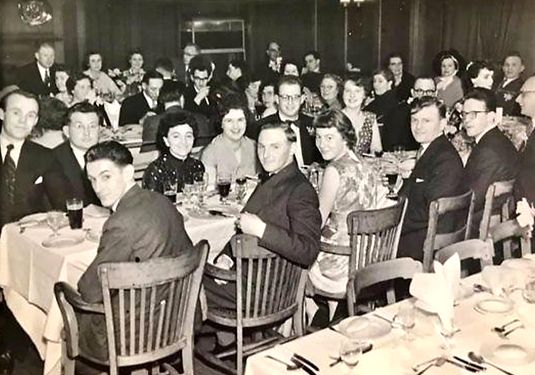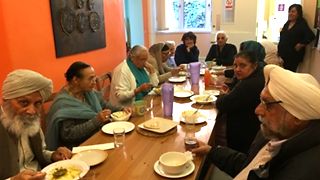Brief History
This imposing building at 31 Cardigan Street was registered as a Primitive Methodist Church in 1881 by Murray Wilson, the superintendent minister. Later on the chapel underwent a number of alterations which included building classrooms for the Sunday School in 1896. The chapel was registered for marriages in 1897.
In 1932 the Primitive Methodists joined with the Wesleyan and the United Methodists to form the Methodist Church of Great Britain. This is referred to as the Methodist Union. The following year all the Wesleyan and Primitive Luton Circuits were combined into two separate circuits; Luton and High Town. After the Methodist Union the Cardigan Street Methodist Church became the part of the High Town Circuit until 1944, when they merged to form the Luton Methodist Circuit. The Cardigan Street Methodist Church then continued to be used as a Chapel until it closed in 1950 after the last Methodist service held there on 31st December 1950 with many of the remaining members transferring to Beech Hill.
It was sold to the Luton Welsh Congregational Church in 1951 for £4000 (equivalent to £150,000 today). The Welsh Congregational Chapel remained in operation until the late 1980s.
As the numbers in the congregation declined it was acquired by the local Sikh Community who converted it to a Gurdwara, or temple, which is its current use. In 1983 it became a Sikh religious centre – the Shri Guru Ravidass Bhawan.
Bushmead School and Cardigan Street Sikh Gurdwara
Results from Childrens’ Work
School Involved:
|
|
 |
Bushmead School – Local History project |
Background Information
Early Primitive Methodism in Luton

Mr J Impey – Circuit Steward
In 1808 the Luton Methodist Circuit was created. It is important to remember that most of these Methodist meetings were not held in chapels but in private houses or barns. In 1839 Luton was visited by Primitive Methodists, these pioneer evangelists started to preach on the Market Hill ‘in demonstration of the Spirit and of power.’ In the same year the first Primitive Methodist Chapel was erected. In the next decades many Methodist societies were formed in the town. One of them was the London Road Primitive Methodist Church.
Mr. Impey was one of the stewards in Luton, under his leadership Methodism was blossoming, the society got bigger, and Sunday schools were opened.
The Methodist Church is the fourth largest Christian Church in Britain, after the Anglican and Roman Catholic Churches and the Church of Scotland. It has more than six thousand churches and a total membership of approximately 330 000 people. There are Methodist Churches in nearly every country in the world and global membership numbers some 70 million people.
The main Methodists teaching is that Jesus Christ died for all of humanity and that salvation is available for all and every soul can be saved through redemption such as good deeds.
The Wesleyan, Primitive and United Methodists came together in 1932 to form the Methodist Church of Great Britain. The following year all the Wesleyan and Primitive Luton Circuits were combined into two circuits, Luton and High Town.
Welsh Congregational Church
Collection of images of the Welsh Congregational congregation. More details of their tenure of the building can be found in the video below.



Shri Guru Ravidass Sangat

Shri Guru Ravidass Sangat was established in 1983. It is a registered charity based in the heart of Luton.

Langer Hall
At the heart of this initiative was to focus on the promotion of the teaching of Shri Guru Ravidass Ji and serve the Ravidassia Community of Luton and surrounding area. Moreover underlying this it is to preserve the understanding and practicing the message of the Gurus through Naam Japna (devotion and mediation), Kirit Kamai (honest earnings) and wand chakna (sharing with others) through the institution of a Guru Ghar – focusing on the promotion of the teaching of Shri Guru Ravidass Ji.

Darbar
Our origins are faith based and whilst we still maintain this we understand that we have a strong reach into our local community and our centrally located resource is greatly underused. We have learnt a lot from similar such establishments including churches, other faith groups and community organisations and how they have adapted their approach to tackle community needs and adapted our approach according to local needs. With this in mind we have set up services to improve the quality of life of local; disadvantaged communities. Each of our programmes aims to support disadvantaged and marginalised communities and advance the Ravidassia principles of equality, social welfare and worship through.
- the provision of learning, recreational and leisure services provided in the interest of social welfare
- provide activities which support members to improve their skills
- tackle the disproportionate social and economic exclusion experienced by members
- community cohesion


More details can be found on their website http://sgrsluton.org/
Personal Stories (Recorded Interviews)
We have recorded interviews from:
- Fran Pearson, granddaughter of a Methodist Minister at 31 Cardigan Street in the first half of the last century shares her childhood memories of being a Methodist in Luton,
- Michael McMahon talks about the Welsh Congregation Church 1951 to 1980,
- Sanjeev Kumar MBE from the Shri Guru Ravidass Sikh community in Luton

